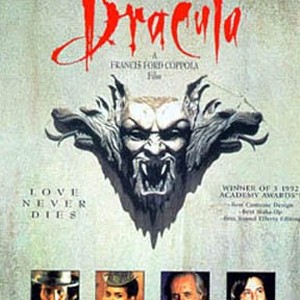Bram Stoker’s Dracula (1992): A Cinematic Feast of Gothic Grandeur and Artistic Brilliance

Introduction:
In the annals of cinematic history, few films have managed to captivate audiences with the same hypnotic allure as Francis Ford Coppola’s “Bram Stoker’s Dracula” (1992). This cinematic masterpiece, an opulent and daring adaptation of Bram Stoker’s timeless novel, stands as a beacon of gothic grandeur and artistic brilliance. From its sumptuous visuals to its masterful storytelling, the film transcends the boundaries of the horror genre, offering a profound and visually stunning experience that has left an indelible mark on both critics and audiences alike. In this extensive review, we delve into the hauntingly beautiful world of “Bram Stoker’s Dracula,” exploring its narrative intricacies, visual splendor, and enduring impact on the cinematic landscape.
Section 1: Visionary Direction and Cinematic Opulence
1.1 Coppola’s Artistic Vision
At the helm of “Bram Stoker’s Dracula,” Francis Ford Coppola masterfully steered the ship, crafting a film that remains faithful to Stoker’s source material while injecting it with his own visionary sensibilities. The director’s commitment to creating a visually sumptuous and narratively rich experience is evident in every frame, as he weaves a tapestry of horror, romance, and gothic grandeur.
1.2 A Cinematic Feast
The visual opulence of “Bram Stoker’s Dracula” is nothing short of breathtaking. The film’s lavish production design, intricate costumes, and atmospheric cinematography transport audiences to the dark and mysterious realms of Victorian England and Eastern Europe. Coppola’s meticulous attention to detail transforms every scene into a visual feast, evoking the gothic spirit of the source material.
Section 2: Timeless Characters and Outstanding Performances
2.1 Gary Oldman’s Iconic Dracula
In the titular role, Gary Oldman delivers a performance that is nothing short of iconic. Oldman’s portrayal of Count Dracula is a tour de force, capturing the character’s multifaceted nature with nuance and intensity. From the hauntingly romantic to the monstrously malevolent, Oldman breathes life into the immortal count, creating a Dracula that is both captivating and deeply unsettling.
2.2 Keanu Reeves and Winona Ryder
The film’s stellar cast also includes Keanu Reeves as Jonathan Harker and Winona Ryder as Mina Harker. While their performances received mixed reviews, their presence adds to the film’s star-studded ensemble. Reeves brings a youthful earnestness to the role, while Ryder’s ethereal beauty and emotional depth elevate her portrayal of Mina.
Section 3: A Love Story Shrouded in Darkness
3.1 Dracula’s Tragic Romance
“Bram Stoker’s Dracula” distinguishes itself by placing a poignant emphasis on the tragic love story at the heart of the narrative. Dracula’s undying love for Mina becomes a driving force, transforming the horror tale into a haunting romance that transcends time. The film explores the depths of love, loss, and the eternal struggle between darkness and redemption.
3.2 Mina’s Complex Journey
Winona Ryder’s Mina Harker undergoes a transformative journey, navigating the complexities of love, desire, and the supernatural. The film explores Mina’s agency, portraying her as a character with her own desires and conflicts, adding depth to the narrative beyond the archetypal damsel in distress.
Section 4: Technical Mastery and Practical Effects
4.1 Pioneering Practical Effects
“Bram Stoker’s Dracula” is a triumph of practical effects and innovative filmmaking. The use of practical effects, including intricate makeup, prosthetics, and in-camera tricks, adds a visceral and tangible quality to the film’s supernatural elements. The result is a visual spectacle that stands the test of time, demonstrating the power of practical craftsmanship in an era dominated by emerging CGI technology.
4.2 Oscar-Winning Art Direction and Costume Design
The film’s technical achievements extend to its Oscar-winning art direction by Thomas Sanders and costume design by Eiko Ishioka. The elaborate sets and ornate costumes contribute to the film’s immersive atmosphere, transporting audiences to the lush and atmospheric settings of Stoker’s gothic tale.
Section 5: A Musical Tapestry by Wojciech Kilar
5.1 Wojciech Kilar’s Haunting Score
The film’s haunting musical score, composed by Wojciech Kilar, is an integral component of its atmospheric allure. Kilar’s compositions, featuring a mix of orchestral and choral elements, enhance the film’s emotional depth and contribute to the haunting ambiance. The score’s memorable themes linger in the minds of viewers, underscoring the film’s lasting impact.
5.2 The Symbiosis of Music and Visuals
The synergy between Kilar’s score and Coppola’s visuals creates a cinematic symphony that heightens the emotional resonance of key scenes. The musical tapestry weaves seamlessly with the narrative, enhancing the film’s gothic romance and accentuating its moments of horror and suspense.
Section 6: Critical Reception and Cultural Impact
6.1 Initial Critical Response
Upon its release, “Bram Stoker’s Dracula” received a mix of critical reviews, with praise for its visual opulence and criticism for certain performances and deviations from the source material. However, its bold artistic choices and visual splendor garnered a cult following, and subsequent reevaluations have elevated its status in the horror genre.
6.2 Cultural Endurance
Over the years, “Bram Stoker’s Dracula” has endured as a cult classic, celebrated for its audacious interpretation of Stoker’s novel and its lasting impact on gothic cinema. Its influence can be seen in subsequent vampire films and adaptations that have drawn inspiration from Coppola’s bold vision.
Section 7: Conclusion
“Bram Stoker’s Dracula” (1992) stands as a testament to the power of cinematic artistry and the enduring allure of gothic storytelling. Francis Ford Coppola’s bold and lavish interpretation of Bram Stoker’s classic novel is a cinematic feast for the senses, offering a hypnotic blend of romance, horror, and visual grandeur. From Gary Oldman’s magnetic portrayal of Count Dracula to the film’s technical mastery and haunting musical score, every element contributes to an immersive experience that transcends the boundaries of traditional horror cinema. As the years pass, “Bram Stoker’s Dracula” remains a shining example of a film that not only embraced the darkness but also reveled in the beauty that lurks within the shadows, leaving an indelible mark on the cinematic landscape.




